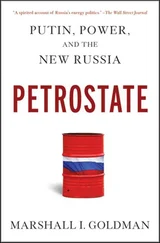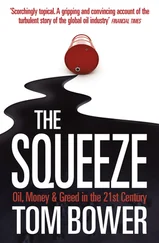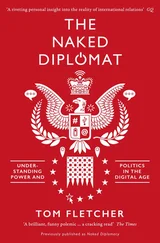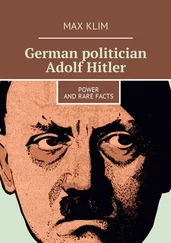Never has this race been so hotly contested so early on. Juan Manuel Fangio is hot on Hawthorn’s heels. To get there, the legendary Argentinian race driver has played an incredible game of catch-up. To overcome his awful start, Fangio has floored his Mercedes Benz, and, risking life and limb in the process, has managed to erase Hawthorn’s lead of two rounds. While competing with each other, Hawthorn and Fangio have achieved average speeds of 200 kilometers an hour. These have left the rest of the pack far behind, with the two leaders already having lapped a number of the other drivers. Driving at such top speeds is absolutely nonsensical so early—a mere two and a half hours after the starting gun—in a race that lasts for 24 hours.
Hawthorn and Fangio are facing a straightaway in which, once more, slower race cars are ahead of them. Driven by Lance Macklin, a Briton, an Austin Healey is proceeding along on the right of the track at a speed of 190 kilometers an hour. About to pass Macklin is another Silver Arrow, this one driven by Pierre Levegh. Although already lapped by Hawthorn and Fangio, Levegh also plans to overtake the slower Austin Healey.
The recruiting of Levegh to its team represents a PR coup on the part of Mercedes. Levegh is an amateur driver who is highly popular in France. His joining the highly-successful team from Germany is designed to be a symbol of the reconciliation between the two countries. Mercedes is thus sending a team featuring a Frenchman—in addition to such stars as Fangio and Stirling Moss—to compete in the most important car race in France.18 Mercedes has other reasons for recruiting Levegh, whose daytime job is being a jeweler based in Paris. The nearly 50 year old has repeatedly and successfully competed at Le Mans. In the 1952 staging of the 24 Hours of Le Mans, Levegh was the only driver to stay at the wheel for the race’s entire 24 hours. Up until the very end of the race, Levegh had a commanding lead. A mere 15 minutes prior to the end of the race, his gears failed, robbing him of a certain victory in the process. This tragedy left him the moral victor, and made him the much-loved “hero of Le Mans”.
Levegh is also flooring his car in the moments prior to the accident. Maintaining the high speeds of Hawthorn’s Jaguar, the race’s leader, Levegh’s Mercedes tears along the very left of the track. Macklin sticks to the right. In a stretch immediately in front of the pit lane, Hawthorn’s Jaguar passes—taking the middle of the track—his fellow-countryman’s Austin Healey. Hawthorn then zooms to the right. At this point, he is in front of the Austin Healey. But instead of continuing to speed away from the car, Hawthorn brakes sharply, so as to leave the track on the right, and to head for a pit stop. His sudden and unexpected braking unleashes a horrifying chain reaction. His Jaguar is the only car that has disk brakes. The Austin Healey has drum brakes—and thus a much longer braking path. Macklin is forced to abruptly swerve to the left to avoid a collision with Hawthorn. This puts him in the path of Levegh’s Silver Arrow, which is approaching him at a speed of 240 kilometers an hour. Levegh’s car nicks the left rear fender of the Austin-Healey. Acting as if it had been launched from a rocket pad, the Mercedes veers to the left, bounces against a concrete wall, from which it is spun against the barricade separating the race tracks from the spectators. Levegh is jettisoned from his car and dies at the site of the accident. His car is smashed to pieces and starts to burn. Its axles, wheels, brakes and sections of its chassis are catapulted into the crowds thronging the track. The spectators standing in this area are mowed down by the debris flying in their midst. Heads, arms, entire torsos are cut off in the process. It is a scene of absolute horror.
The collision with the Silver Arrow causes Macklin’s Austin-Healey to skid. Its plunges into the pits, running over three people in the process, only to then be sent flying across the track, running into the barricade protecting the bleachers. It comes to a stop there. Macklin is able to free himself from his wrecked car.
The accident lasts no more than four seconds. Its consequences are catastrophic. The accident remains the worst ever experienced in automobile racing. The only reason why TV viewers in Germany and France are spared a live transmission of the dreadful catastrophe was the broadcasters’ schedules of programming. These schedules cause the TV channels to interrupt during the late afternoon their live coverage of the race, so as to show other programs.19 Notwithstanding this, the horrible details of the accident are filmed. Working for a French TV network, two cameramen are using a 16 millimeter cine camera to shoot shorts for inclusion in later reports. The cameramen have stationed themselves in front of the pits20, so as to shoot scenes conveying the race’s atmosphere. Then the accident takes place. Immediately upon the crash of Levegh’s Silver Arrow, the cameramen point their cameras to the scene of the accident. The images that they record are so horrifying that the only thing ever to be shown of them are several excerpts.
The accident kills 84 people. One hundred more suffered injuries. Hundreds, perhaps even thousands, are left traumatized. Notwithstanding all this, the thousands of spectators located at other areas of the racetrack hardly—if at all—notice the accident. Accidents are in any case part of automobile racing’s daily fare. The fact that the drivers are continuously putting themselves in danger by driving at their vehicles’ technical limits and by undertaking daring maneuvers produces racing’s especially strong appeal to the spectators. They love the kick arising from the rush of speed. They seem to revel in racing’s “flair”, which includes the pillars of smoke spiraling up from vehicles on fire, and of the sight of dead drivers. Immediately after the accident at Le Mans, two laps of low speeds are imposed upon the drivers at the race. The race itself is not called off. After a brief period, it is, rather, permitted to proceed as normal. Most of the people attending it learn of the magnitude of the catastrophe only from the following day’s newspapers.
Juan Manuel Fangio escapes the inferno unscathed. He subsequently reports that Pierre Levegh had warned him—via a hand signal—of the dangers ahead. The Frenchman has thus saved his life. This adds yet another chapter in automobile racing’s long history derring-do, camaraderie and other legendary deeds.
The accident gives rise to another legend. For decades, conventional wisdom linked it to the end of the era of Silver Arrows. To be noted is that all other teams at Le Mans in 1955 did not stop racing at it afterwards. Mercedes did in fact decide during the night of June 12, 1955 to withdraw its team. A few days after the catastrophic accident, Fritz Könecke, Mercedes’ boss, announced that Mercedes would no longer take part in automobile racing. The message emanating from this decision is capable of being understood to be that the ’price to be paid for the achieving of sporting successes and of the prestige associated with it is not worth the price, which was paid in human lives’. Mercedes thus abruptly left the sport that it had come to dominate during its short return to it. Its racing team had in fact already rapidly met the ambitious goals set for it by the company’s executive board. Mercedes’ decision did not at all diminish the aura emanating since the pre-WW II era from the Silver Arrows. The aura maintained itself throughout the years of Mercedes’ refraining from participating in racing. Since the withdrawal of 1955, racing fans have bemoaned the lack of ’their’ Silver Arrows. Their attitude has almost been to treat the results of each subsequent race as being incomplete, since, of course, no Silver Arrow was there to compete in them.
Читать дальше












